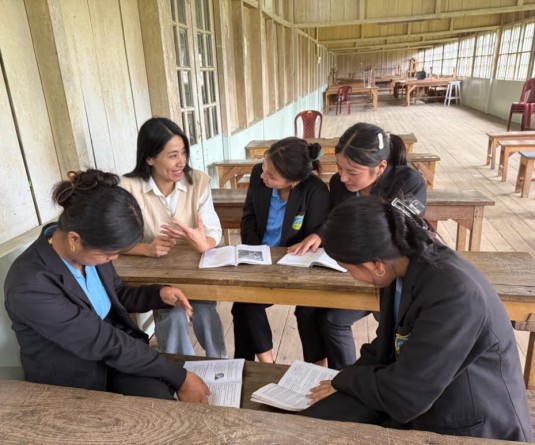
Neichü Dz Angami
‘Access to second-line medicines and laboratory services for people with drug resistant Tuberculosis or/and HIV is the Right to Life, to Dignity, and defends the right to life of others’. This is not just a slogan for renewed activism, but it is indeed a critical issue that will determine the progress made so far in HIV intervention and TB treatment globally. The growing challenge of Multi-Drug Resistance and Extremely Drug Resistance TB (MDR and XDR-TB) is confronting the world with an unprecedented need to revisit the Global Strategy to Stop TB as well as the Global movement for universal access to Anti-Retro Viral Treatment (ARVs).
Tuberculosis (TB) is a major cause of death among people living with HIV and AIDS. HIV compromises the immune system and thus increases the likelihood of TB infection, progression, and relapse. It is estimated that one third of the 40 million people living with HIV worldwide are co-infected with TB. TB kills up to half of all people with HIV worldwide. Unlike HIV, however, TB can be cured. Treatment with anti-TB drugs has been shown to prolong the lives of people living with HIV. Offering TB tests and treatment to people with HIV—and vice versa—greatly increases the chances that both diseases can be controlled. Inadequate and inconsistent treatment practices, on the other hand, can cause drug-resistant strains of TB. Multi-drug resistant tuberculosis (MDR-TB) is difficult to treat and can be fatal. The emergence of MDR-TB thus poses a grave threat not only to be people with TB, but to overall progress in the global fight against HIV and AIDS.
At the United Nations High Level Meeting on HIV/AIDS in 2006, world leaders reaffirmed that “the full realization of all human rights and fundamental freedoms for all is an essential element in the global response to the HIV/AIDS pandemic.” Yet, 25 years into the AIDS epidemic, the “essential element” remains the missing piece in the fight against AIDS. This declaration, endorsed by 24 nongovernmental organizations and networks around the world, affirms that, now more than ever, human rights should occupy the center of the global struggle against HIV and AIDS.
By and large, human rights abuses related to HIV have not been significantly addressed in many communities around the world. As a result, stigma and discrimination remain pervasive, and vulnerability to infection continues to be rooted in social, economic and gender inequalities. These realities contribute to the rising number of infections each year, with women, young people and marginalized groups getting infected at the fastest rates and bearing the worst impact of AIDS
Since the first cases of AIDS were identified in 1981, it has been recognized that: Stigma and discrimination against people living with, affected by, and vulnerable to HIV infection are major obstacles to delivering HIV prevention, care and treatment services. HIV stigma and discrimination are often entangled with the discrimination attached to being a woman, being poor, having a different sexual orientation, engaging in sex work or drug use, or being in prison. Protection of human rights, both of those vulnerable to infection and those already infected, is not only important for individuals, but also produces positive public health results.
As the epidemic has progressed, it has also become increasingly clear that: National and local responses to HIV will not work without the full engagement and participation of those affected by HIV, particularly people living with HIV. The human rights of women, young people and children must be protected if they are to avoid infection and withstand the impact of HIV. The human rights of marginalized groups, including people who use drugs, sex workers, prisoners, and gay and bisexual men, must also be respected for the response to HIV to be effective.
Besides the staggering challenge with HIV and AIDS, we are also aware of the growing problem with TB. Almost two million people from diverse communities die every year from tuberculosis, although a cure was found some sixty years ago. They are wasting away in the barren lands of poverty, suffering in the dark shadows, mostly unheard and unseen by those ‘on the top’. This tragedy is the responsibility of the member nations of the World Health Organization, who in spite of noble words and agreed targets, have not protected their vulnerable populations against this preventable disease. It is also a clear indication of the failure of the affected communities to defend themselves.
Enough! It’s time to turn wastelands into fruitful gardens, and to bring fresh air and sunshine into the movement to Stop TB and HIV/AIDS. Now is the moment to grow the mobilization in communities decimated by tuberculosis, leading to a harvest of the human and financial resources needed to scale up the response to the spread of TB-HIV and MDR-XDR TB. Access to proper diagnostics, quality drugs and basic human rights of dignity and respect is indeed the beginning of the harvest. This is of course, a Human Rights Issue.




